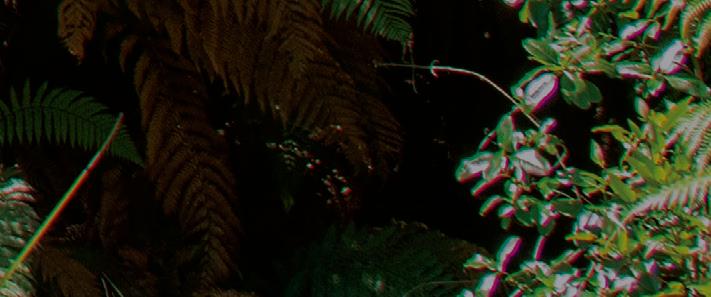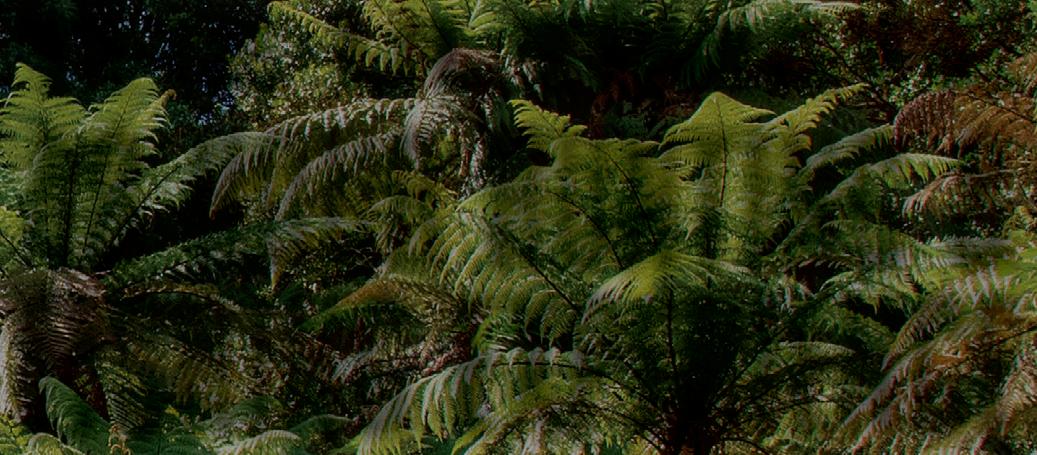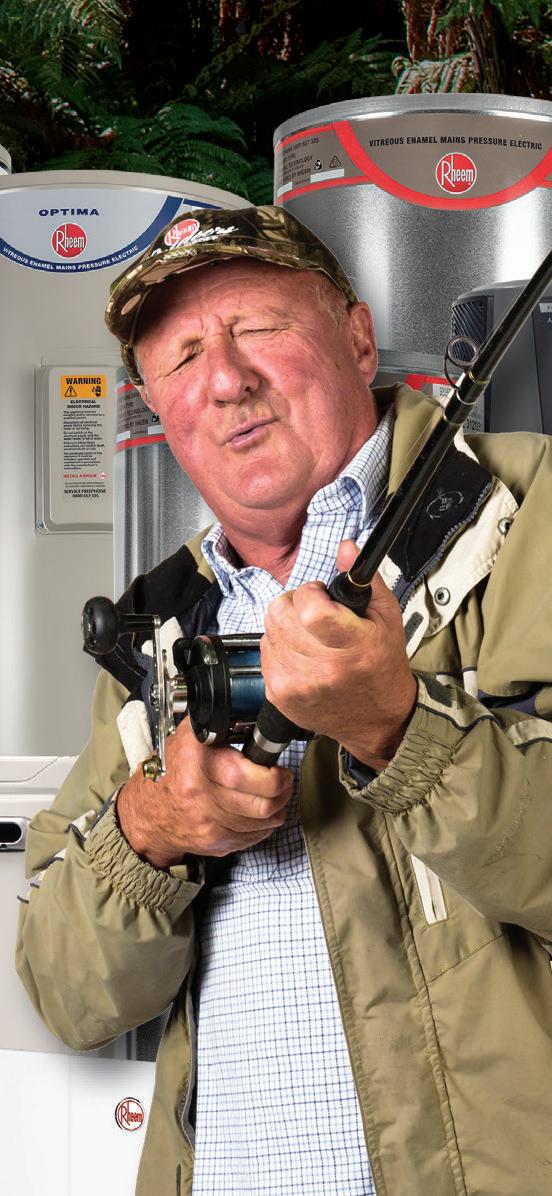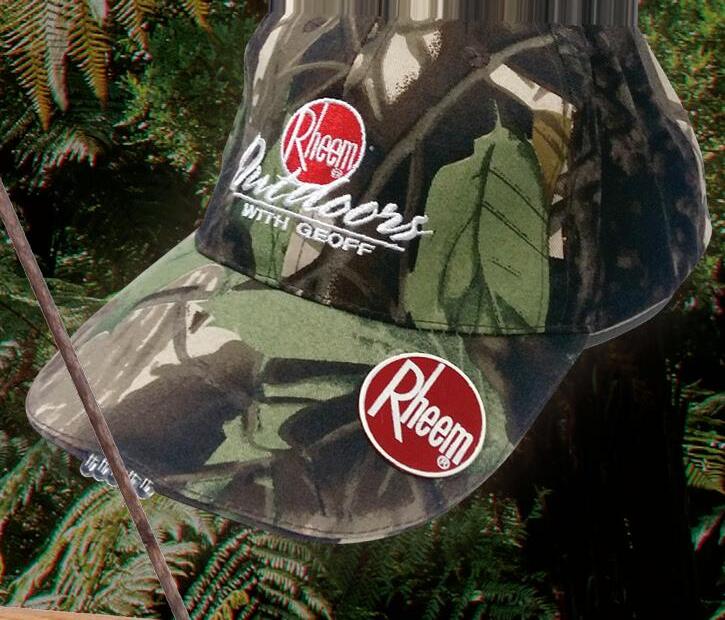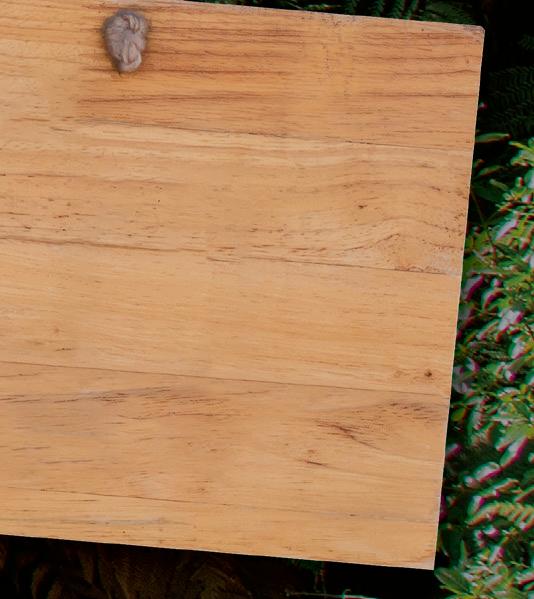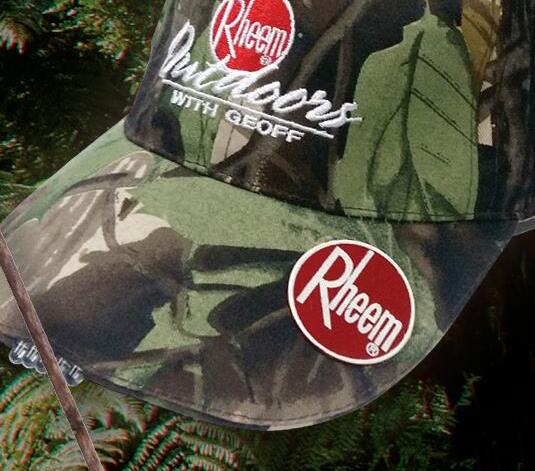SPEARFISHING FOR PORKERS BEX THE BUILDER


SPEARFISHING FOR PORKERS BEX THE BUILDER




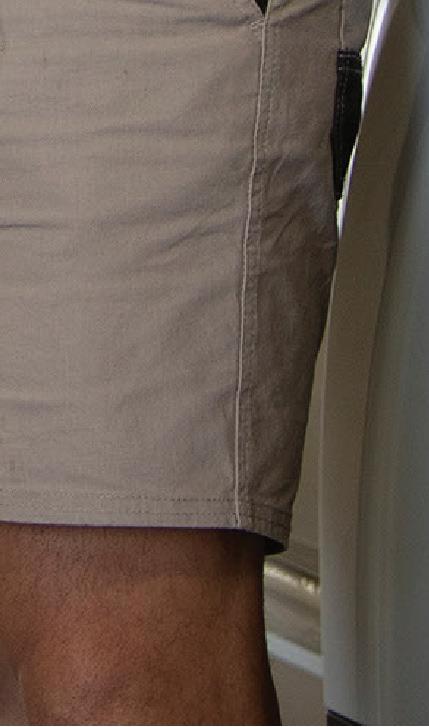

In 1991, six Kiwi timber merchants banded together to create a building supply company. One that could take on the big players while keeping things local. Today, with 91 independently owned stores and 26 frame and truss plants right across the country, we’ve got that national strength, but we’ve never lost sight of our local roots.





When you deal with your ITM store, you’re dealing with local owners who care about your business. After all, we’re in this together. That’s why when we say we’ll see you right, we mean it.

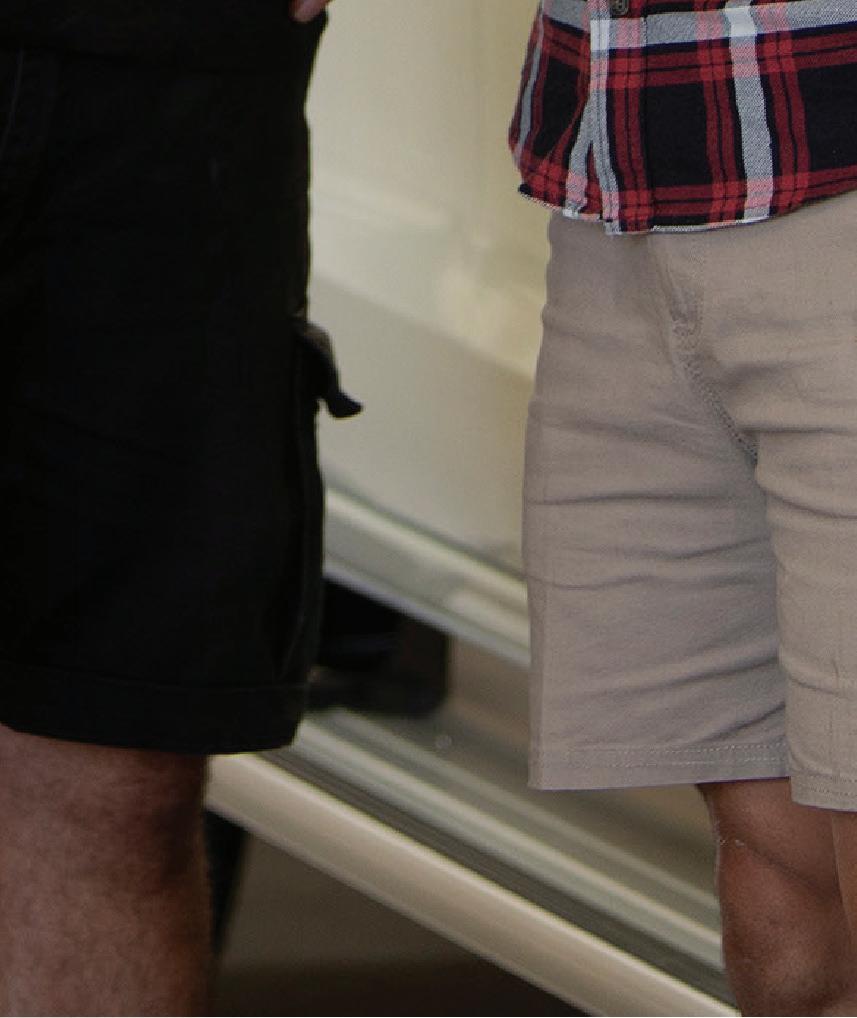
Editor Jason Harman
Designer Artje Schrjivers
Sales Josh Williams 021 862 579
sales@nz shingnews.co.nz
Editorial Enquiries Jason Harman jason@nz shingnews.co.nz
Advertising within this publication is subject to NZ Fishing Media Ltd’s standard advertising terms and conditions, a copy of which is available by emailing grant@ nz shingnews.co.nz
Cover Photo
Joe Edlington @j.e.wilds team Rheem
We’re kicking off this issue with a feature from the South African prince of the underwater realm – David DuPavillon (@daviedupav). Davie introduces us to porkers of the sea (boar sh) and gives us a lekker masterclass on how to target them on the spear.
For the ColorCote Tradie Pro le this issue, Nick Jones interviews Rebecca Welker (@bexthebuilder) about her circuitous journey into the trades and how she aims to inspire other women to pursue the tradie life.
Next up, artisanal gourmand of smoke and re, Simon Walden (@thetradiebbq), delivers a venison
ColorCote
NZ

– Work in Canada
Frames Photography Gallery
Tradie BBQ: Venison Sausage Rolls
Wild Reign
Wild Land Product Review
comfort food recipe that is nothing short of saliva-generating.
Lastly, YouTube sensation Joe Edlington (@j.e.wilds) shares an epic story from a recent mission off the bricks in pursuit of greenback glory.
As always, get in touch if you have any stories of your own to share. We want to hear from you! Message us on Instagram (@offsite_magazine) or ick me an email at jason@nz shingnews. co.nz.
 By David DuPavillon
By David DuPavillon

The giant boarfish Paristiopterus Labiosus, also known as the ‘sow fish’ or ‘duck fish’, is a species of armourhead that is iconic along the North Island weedlines, making an annual appearance in the shallows during the warmer months. These comical-looking creatures use their elongated snout to burrow into the sand, digging up the worms and invertebrates that make up most of their diet.
The species is seldom caught by rod fishermen because sand-dwelling worms are challenging to mimic with lures, and they will not take bait. For spearos, however, they are a great target species that are relatively easy to secure once located.
The weedlines are the favoured hangout of boarfish, and they can be found either on the sand next to the edge or parked up in the weed. They can be easy to miss on a dive as they often sit stationary, camouflaged in the kelp until you swim closer, at which point they can get spooked and hightail it out of sight.
When spearfishing for boarfish, the best technique is to swim along the weed edge, looking for any shape that resembles a stationary fish; this often ends in a piece of kelp or an unfortunate red moki being snuck up on. If there are bends in the weed edge that could offer a place to hide, or an eddy in the current that is holding some bait fish, then diving and laying on the bottom

will sometimes pique the curiosity of the fish if they are nearby to come out of the kelp and have a look at you.
A typical weedline depth would be in the 10-20m range, and if the visibility is good, you can often-times spot the fish from above. Being tall and skinny means the fish don’t see above very well, which is lucky for spearos as this is where most attempts at them are executed. I have found success dropping directly above the fish and then, once within reasonable shooting range, angling out a little and placing the classic top-down, side-to-side shot that usually pins them to the sand. The boarfish is not known for its fighting ability and will occasionally sit with a spear in it until your dive buddy shoots
the fish next to it; this is a characteristic that you don’t see in any other fish species. One tip to keep in mind once you have shot down into the sand is not to return to the surface straight away and start retrieving, as the sand can stop your flopper engaging, and I have seen it happen where the spear gets pulled straight out of the fish.
I don’t want to name any names, but I was in the water with a friend who shot and missed the same boarfish twice before getting it on the third attempt. For those not familiar with spearfishing: the opportunity to shoot at the same fish three times is not presented often and is only offered by the doziest of fish.
The patterns on boarfish vary between sexes, with the males being dark coloured with light spots, and the females sporting a dark/light banded pattern. A lot of the time, the bigger fish will be female and nearby will be the typically smaller male. The juveniles are
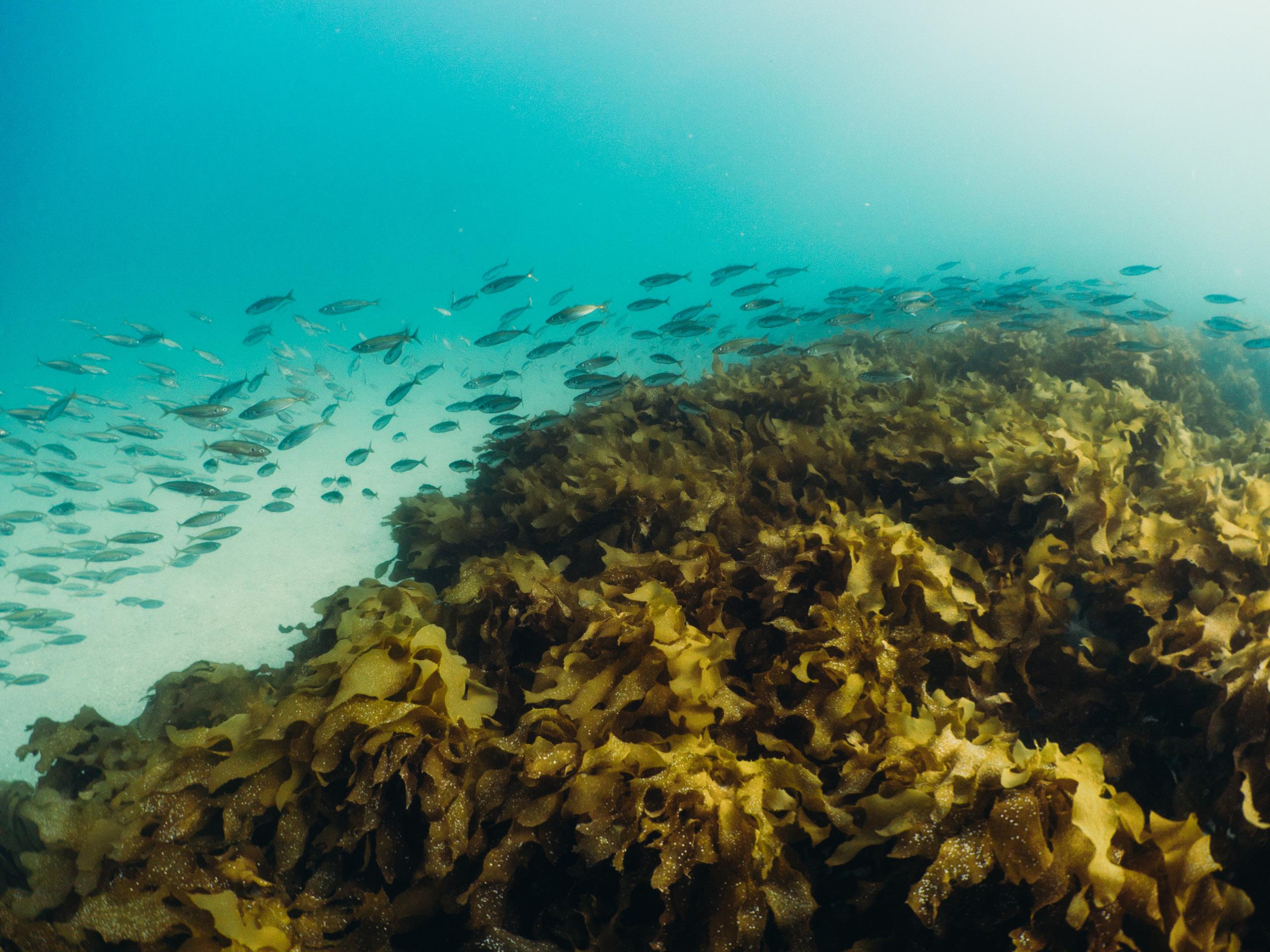
likely to be in shoals, while the mature fish are more often in pairs.
Giant boarfish is included in the combined daily bag limit for recreational fishers. Not much is known about the life cycle and age of the fish, so, without knowing the impact we have on the species, it is crucial to be conservative with our take – boarfish on shallow weed edges are susceptible to overfishing. Boarfish are also slow growing, and a fully mature fish of 9kg can be up to 35 years old.
Giant boarfish is a non-QMS species, but no sale or possession for sale is permitted in the Kermadec to
“When spearfishing for boarfish, the best technique is to swim along the weed edge, looking for any shape that resembles a stationary fish.”
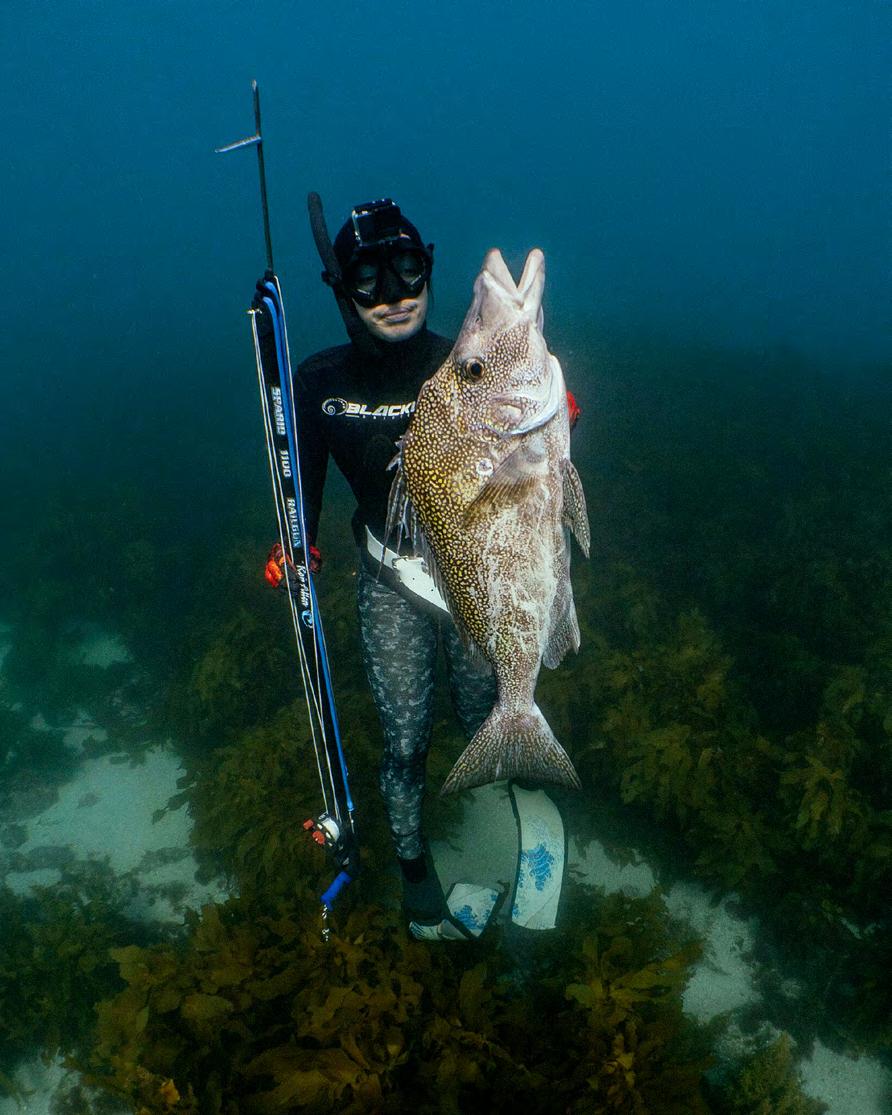
“The eating quality of a boarfish is fantastic, and the closest thing it could be compared to is a thick fillet of john dory.”
Auckland region, which is their primary habitat. Boar sh are often caught as bycatch of set netters and bottom trawlers. Little information is available on the biology and life histories of the sh, so it is unknown if current commercial catches are sustainable.
The eating quality of a boar sh is fantastic, and the closest thing it could be compared to is a thick llet of john dory – or for those who have eaten cobia, it is a similar white, succulent meat that is best left plain with some butter and lemon. It is easy to overcook

and will turn rubbery, so the way I get around that is to leave the skin on the llet and fry in butter until the skin crisps up, after which I squeeze a generous amount of lemon into the pan to deglaze it, then ip the llet meat side down and take it off the heat whilst covering it with a lid and letting it steam for the last part of the cook. You will be left with delicious lemon butter sauce and some melt-in-your-mouth llets.
The boar sh will typically start congregating on the weedlines from early in the year when the water is
between 18 and 20 degrees, though in saying that, I shot one last season in the rst week of November when the water was still 15 degrees.
For the shos feeling left out, I am con dent that with the increase in the use of softbaits and lure shing, it is only a matter of time before there is a consistent way to target the boar sh on a rod; it will undoubtedly be more of a challenge than targeting snapper.

It’s hard to beat a summer’s day spent island-hopping around Auckland’s Hauraki Gulf, but Save the Kiwi is asking boaties to think twice about letting the family dog tag along. The reason is simple: it’s putting our national bird at risk.

A number of islands in the Hauraki Gulf are home to kiwi sanctuaries. Thanks to their remoteness, pest-free islands such as Rotoroa – only a couple of kilometres east of Waiheke – are utilised to keep young kiwi safe from predators until they’re old enough
to survive on the mainland. These islands are pivotal in Save the Kiwi’s conservation efforts, and they also provide safe habitat for other native bird species. Unfortunately, the massive effort required to keep these areas predator-free is being undone when unwitting boaties bring their predators with them.
Every summer, Save the Kiwi receives reports of dogs wandering on protected islands as their owners enjoy the beach and surrounding coastline. For most boaties and fishers, it’s not
malicious, but just a simple matter of not being aware of where they can safely let their dogs ashore. This is why Save the Kiwi has kicked off a campaign to educate boaties about the rules on DOC-managed islands.
If you head to their website, you’ll quickly find that dogs are prohibited on over 20 Hauraki Gulf islands, and even some onshore areas – such as the popular Tãwharanui Regional Park and Hibiscus Coast’s Shakespear Regional Park – are off-limits for dogs, so it is essential every Auckland boatie checks
the full list of restricted areas before they let their dog off the boat. And while Save the Kiwi’s campaign focuses on the Hauraki Gulf, places like the Bay of Islands also have island sanctuaries that dog owners need to be aware of.
‘Know before you go,’ is the simple advice Save the Kiwi offers to every NZ boatie, no matter what region they live in – and there’s a good reason behind this message.
Aotearoa used to be home to millions of kiwi, but this number has dwindled to roughly 68,000 and is continuing to drop by 2% every year.
Save the Kiwi is dedicated to reducing
this decline, but it’s going to take a big effort from all of us to ensure our country’s namesake will be around for future generations to enjoy, so please think twice before bringing the family pet onshore during your next island adventure. No extra motivation should be required to follow the conservation laws, but it is worth noting that anyone caught bringing dogs into prohibited areas may be issued with an infringement fine up to $10,000 or face up to 12 months in prison.
If you are unsure about where you can take your dog, Save the Kiwi has an interactive map with all the
prohibited locations on their website: savethekiwi.nz/boaties. And it’s not all bad news – you’ll also find a list of the locations where you can safely take your dog onshore, including parts of Waiheke Island and Aotea/Great Barrier Island.

Stay safe out there this season, and spare a thought for our national bird before you set out for a day on the Gulf!
Rheem proudly supports Save the Kiwi to achieve their goal and take kiwi from endangered to everywhere. If you’d like to take part and help save New Zealand’s national icon, go to www.savethekiwi.nz/donate – Your donation will help hatch and raise kiwi chicks in safety, increase kiwi populations, and protect wild kiwi habitat.
“Aotearoa used to be home to millions of kiwi, but this number has dwindled to roughly 68,000 and is continuing to drop by 2% every year.”

When Rebecca Welker googled ‘female builders in NZ’ a few years ago, the search engine drew a blank. Rebecca, better known as Bex, was in the sports and recreation industry but says she was spending too much time behind the computer.
“The office part of my previous role drove me mad; I’d look out the window on a beautiful day, and we were all inside, tied to our screens. I was stagnant for 80% of the day.”
She wanted something different. A job where she could be outside and be social. Construction was booming, she had seen some trailblazing Kiwi women in the trades on Instagram, and she was curious. Fortuitously, she was introduced to Troy Jury from Qualified Building Solutions Limited (QBS) through a mutual friend. Troy has three daughters and didn’t hesitate to offer Bex an opportunity. “If you can carry a sheet of gib, you’ll be fine,” he told her. Four years on, both parties are enjoying a great working relationship. Bex has completed her apprenticeship, and by all accounts, more than keeps up with the lads with her fitness and mental fortitude. She also goes about her work with an infectious, beaming smile.
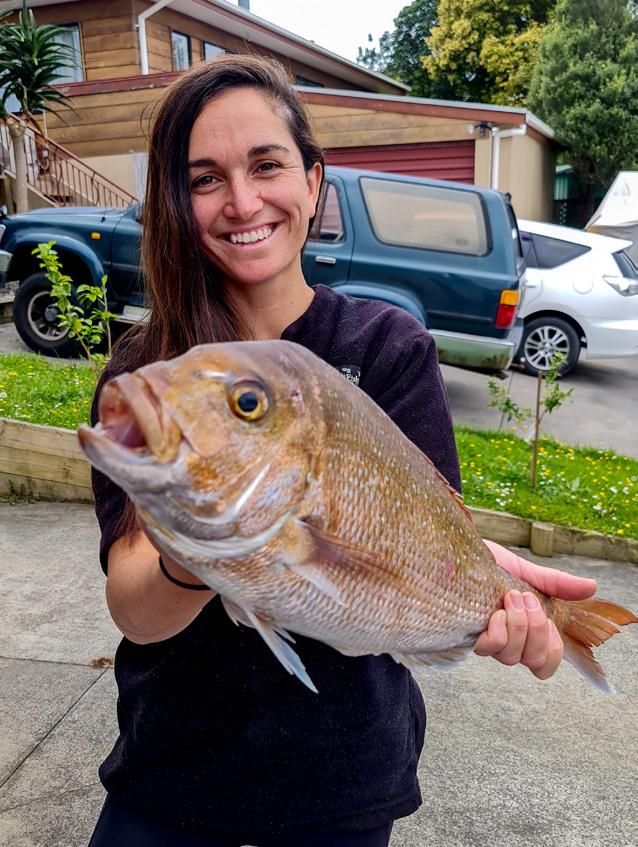
“I can do everything that’s expected of a QBS builder,” Bex says. “Sure, it’s a hard job; I don’t want to undersell it. But at QBS, we work smartly and safely… and the team of 35 builders helps with any really heavy lifting required!”
Bex acknowledges her small
“Being stuck in the office drove me mad; I’d look out the window on a beautiful day, and we were all inside, tied to our screens.”
stature could be a limiting factor in some building enterprises – perhaps those with very small crews that expect concrete to always be wheelbarrowed rather than pumped; or are averse to booking machinery for excavations.

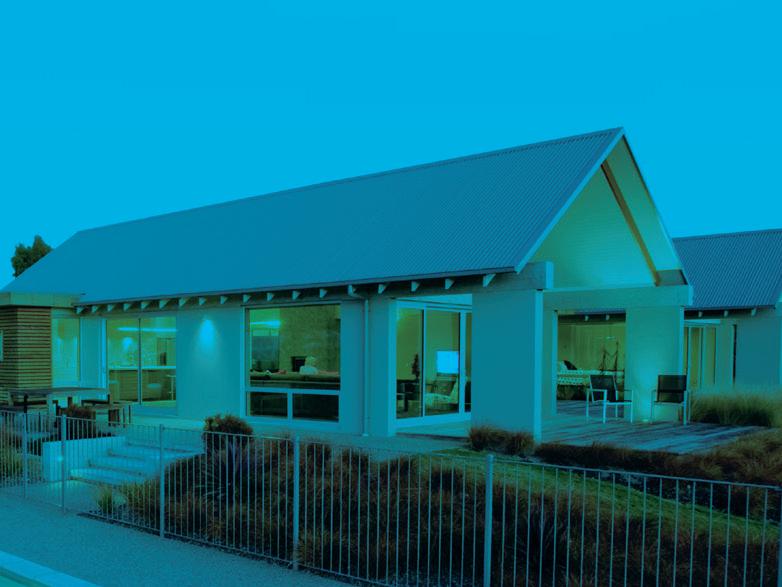
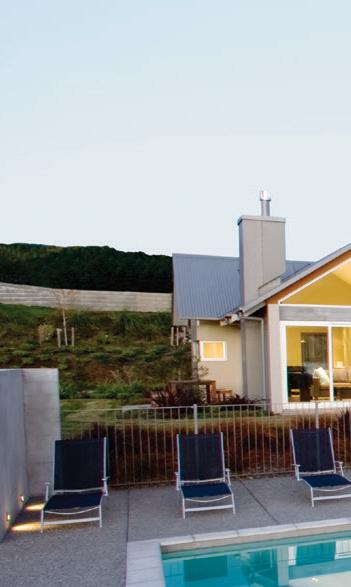
Bex is also a member of the NZ Army Reserve Force, completing twenty service days a year, including some brutal training sessions that test her mental and physical endurance.
“Although throwing grenades around at a high explosives session is cool, I joined up for the challenge. I wanted to test my boundaries,” she says.
Undoubtedly, this has enhanced her onsite resilience, which Bex stresses Troy has also fostered through her building training.
“Troy is good at pushing you with new tasks and responsibilities. Now, I’m at a stage where I’m running a commercial of ce t-out, dealing with subbies, orders, site management, and

keeping morale high at 11 pm!”
Between building and Army commitments, Bex somehow manages to nd time for a few offsite pursuits. She shares a small Mac 360 boat with her partner, and they enjoy the odd Sunday session chasing snapper around Rangitoto Island – although she assures me that they’re both ‘amateurs’. She’s also into board sports, growing up in a family that regularly skated, surfed, and snowboarded.
We should tackle the elephant in the room, though; what’s it like working with a bunch of dudes in such a typically macho industry?
“It’s great. It feels pretty normal. I think having grown up with two older brothers has made it easy for me. I have to admit, though, that it occasionally feels a little bit lonely, particularly in the lead-up to my wedding when there was nobody to discuss dress choices with!”
Bex says Troy has recently hired more women, which she has really
enjoyed. Troy has also come to the party with female portaloos on all their sites! And Bex is doing her part to inspire more ladies to take up a job in construction through her social media account @bexthebuilder.
“I was initially inspired through Instagram, so I feel like giving back through the same method is the right thing to do,” she says. Her advocacy work isn’t limited to social media, though; Bex has worked with the Ministry of Education and the Auckland Chamber of Commerce on their Careerathon to show that building can be an enjoyable and rewarding line of work for the fairer sex.
“Construction needs more people – the easiest way is to target the other half of the population,” Bex rightly notes.
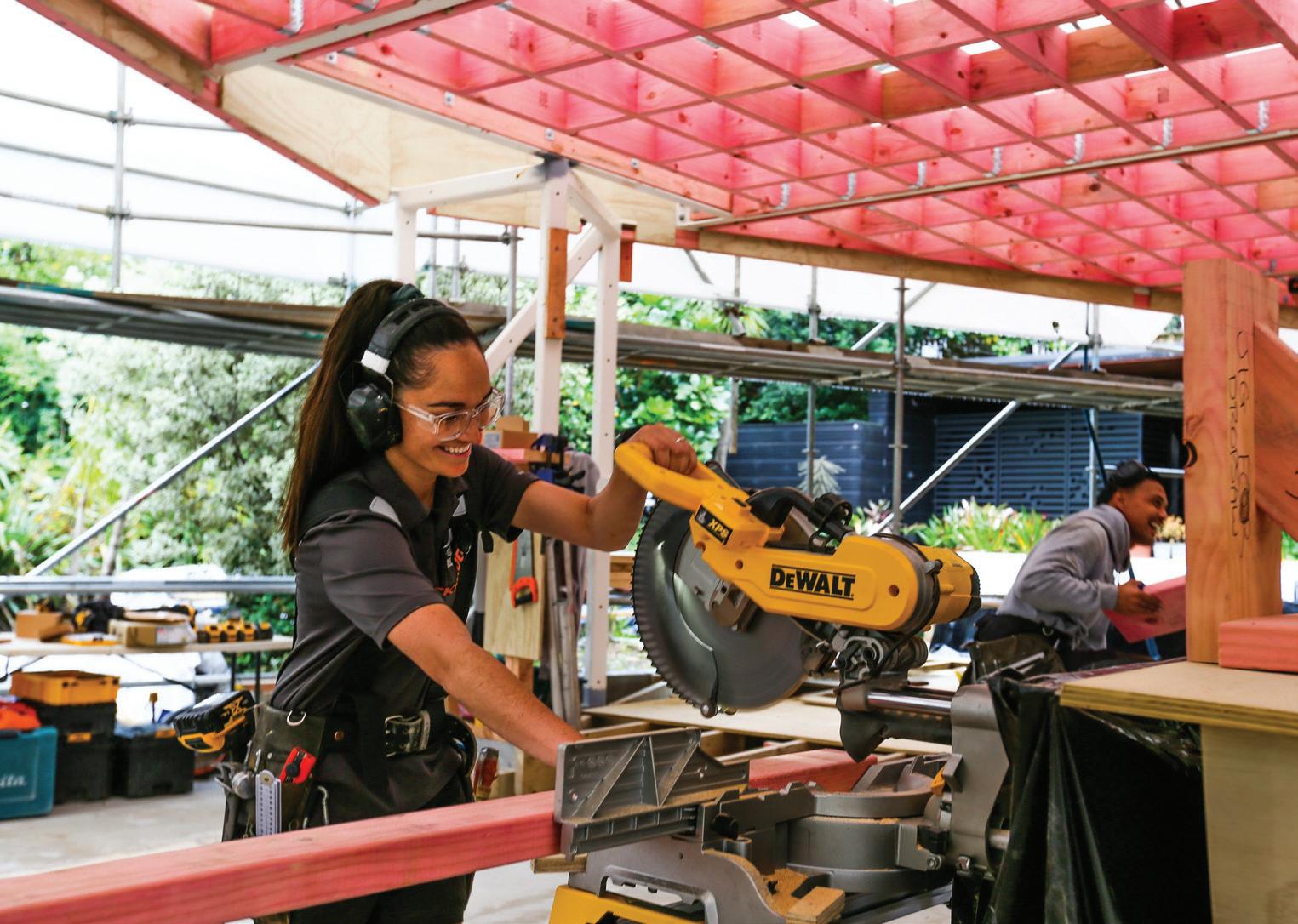

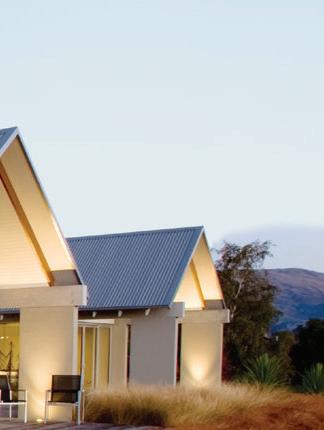
Employers play a crucial role too. Ultimately, it is their decision about whom they hire, so Bex is passionate about breaking down some misconceptions and showing that lasses can make great builders too.
“It’s not hard for employers to order a smaller uniform, and I’m pretty sure separate portaloos aren’t a legal requirement!”
This tradie profile is brought to you by ColorCote
Roofers work between heaven and earth
Working hard for all they’re worth They’re way up high, rain or shine
But if the snow could hold off, that’d be fine.
The roofer’s drink is crafty beer
Other tradies scoff and sneer
But roofers have a lot of class
Some of them drink it from a special glass. Any roofer worth their salt Installs a roof without a fault
They knows what’s best, they knows it’s so
The best looking roof is MagnaFlow.
NOW HIRING—Kiwi-owned, Victoria-based, NZ Builders is a custom home building company in Canada, specializing in high-performance, sustainable, architecturally stunning homes that are built to last in our Pacific Northwest climate.
Our team of skilled, experienced carpenters from New Zealand and around the world bring together a diverse background of talent, expert craftsmanship and attention to detail to every project. We’re proud to have cultivated a culture where Kiwis can feel at home while exploring everything Canada offers. We can even support you through the visa and immigration process.
Like a game of rugby, everyone brings their strengths to the field, and together we make a winning team.

Meet NZ Builders chippy Ross Macdonald, a skilled carpenter and project manager who has been with NZ Builders for six years. As a Kiwi-Canadian transplant, Ross came to the company after seeing an ad on a Facebook group for Kiwis in Canada. He’s had the opportunity to immerse himself in Canadian culture (he’s a big ice hockey fan), while working on some of the most exciting and challenging construction projects in his career. Ross co-managed a “mind-blowing” Concrete Tilt-up home overlooking the ocean and Olympic Mountains, which gave him the opportunity to work with some of the most talented people in the industry. The home has been nationally recognized and received multiple awards for pushing the envelope of architectural and building science.

Victoria, located on Vancouver Island, is a great place for outdoor enthusiasts, with its mild climate and abundant access to mountains, vast rainforest, scenic wilderness and opportunities to spot wildlife.

“My dad being from Canada made coming here an obvious choice. The best thing about Victoria is its size, relative to the size of Wellington. It has a city vibe with great nightlife and restaurants, while also being central to all the things in Canada you hear about that cater to an outdoor lifestyle. Plus, Victoria is also home to Rugby Canada, with several clubs in town that play throughout autumn and spring.”
- Ross Macdonald, NZ Builders Project ManagerWhether you want to move to Canada or visit on a work visa, we are currently hiring skilled carpenters to work with us! We offer a generous compensation package that includes an annual education bonus, access to company vehicles, and the opportunity to learn from some unique projects. Check out www.nzbuilders.com or email info@nzbuilders for more information.

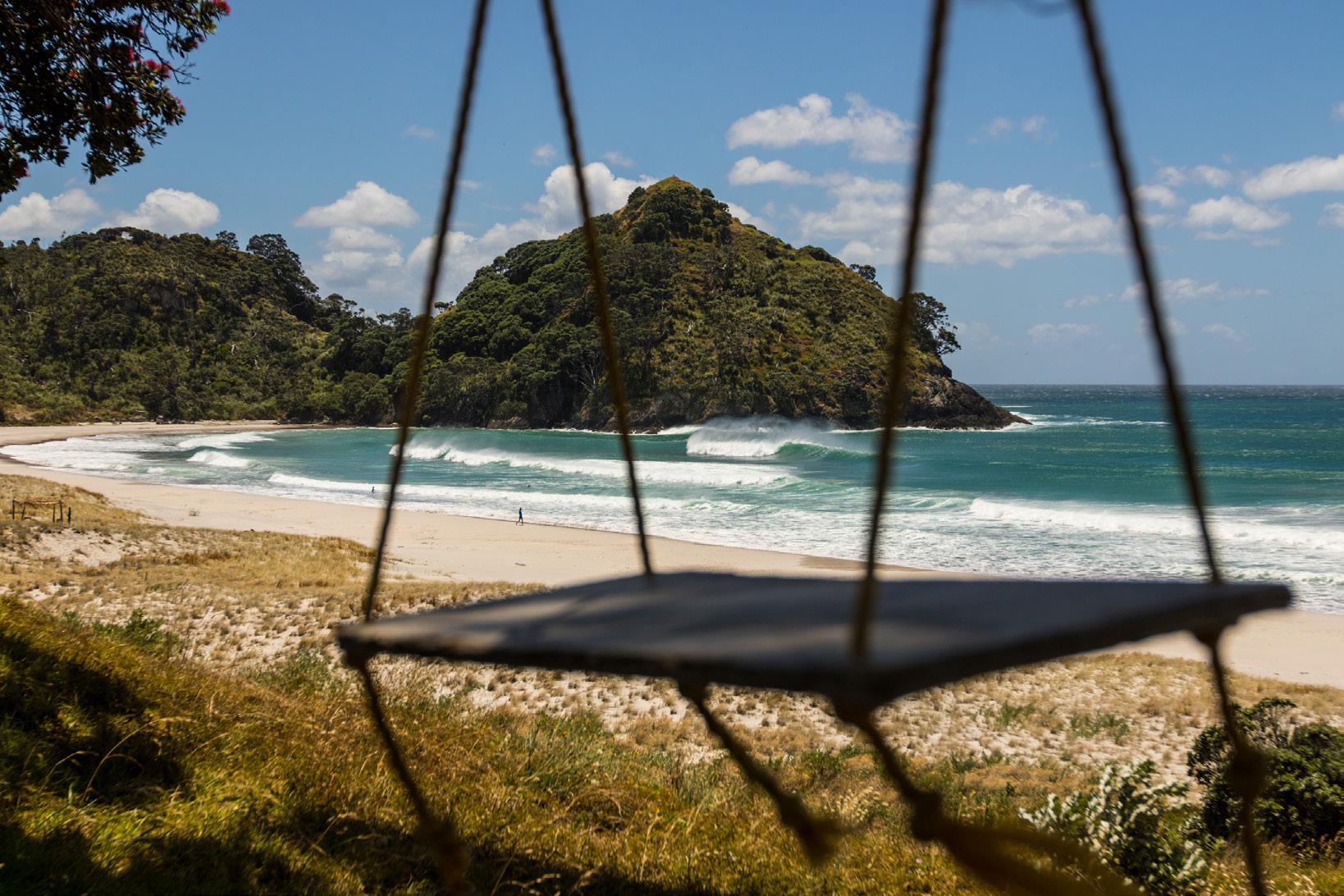
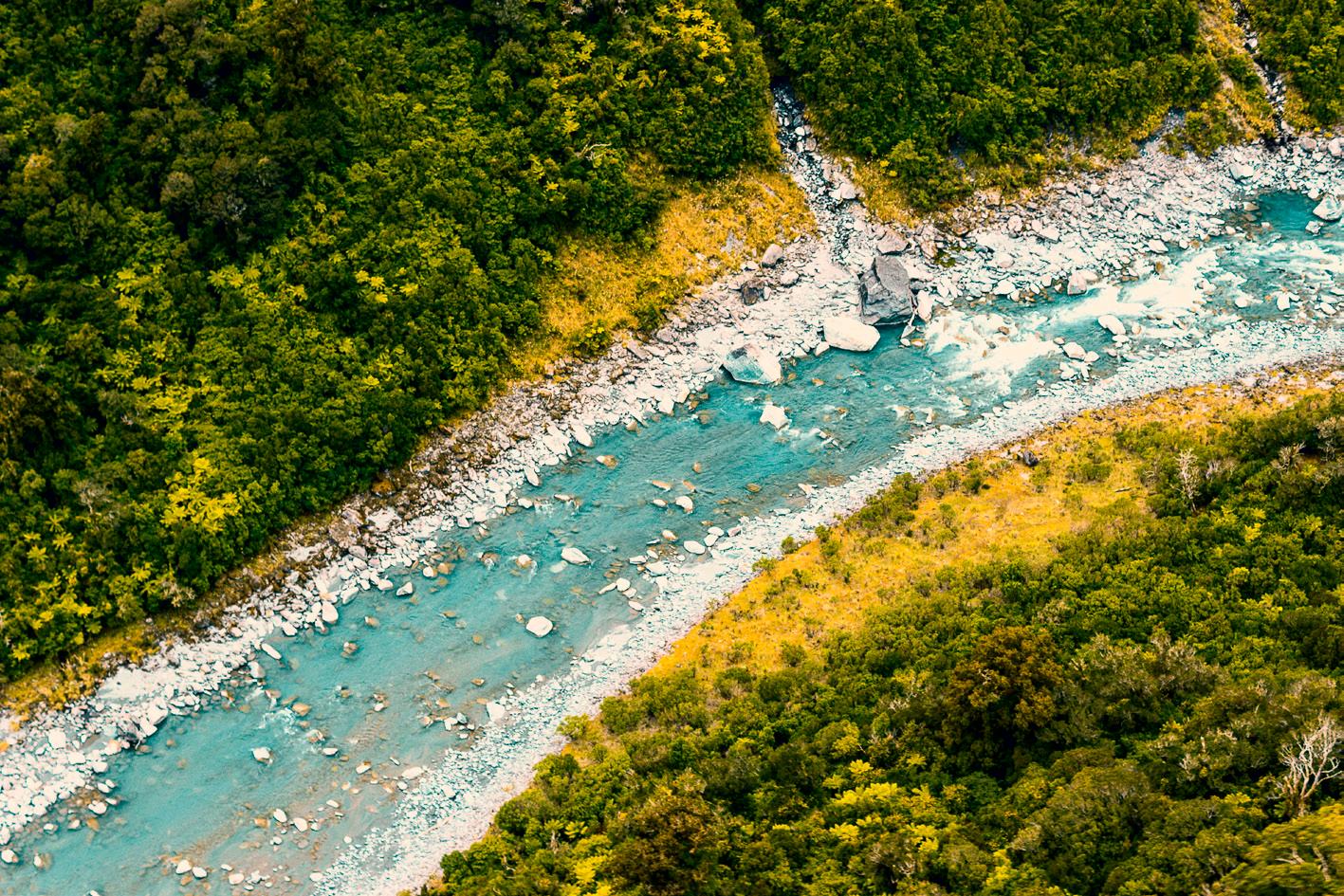





Preheat your BBQ or oven to 400F/204C. I like to set the BBQ up with a kettle cone, but you could also use coal baskets. If you’re using an oven, use a baking tray lined with baking paper.
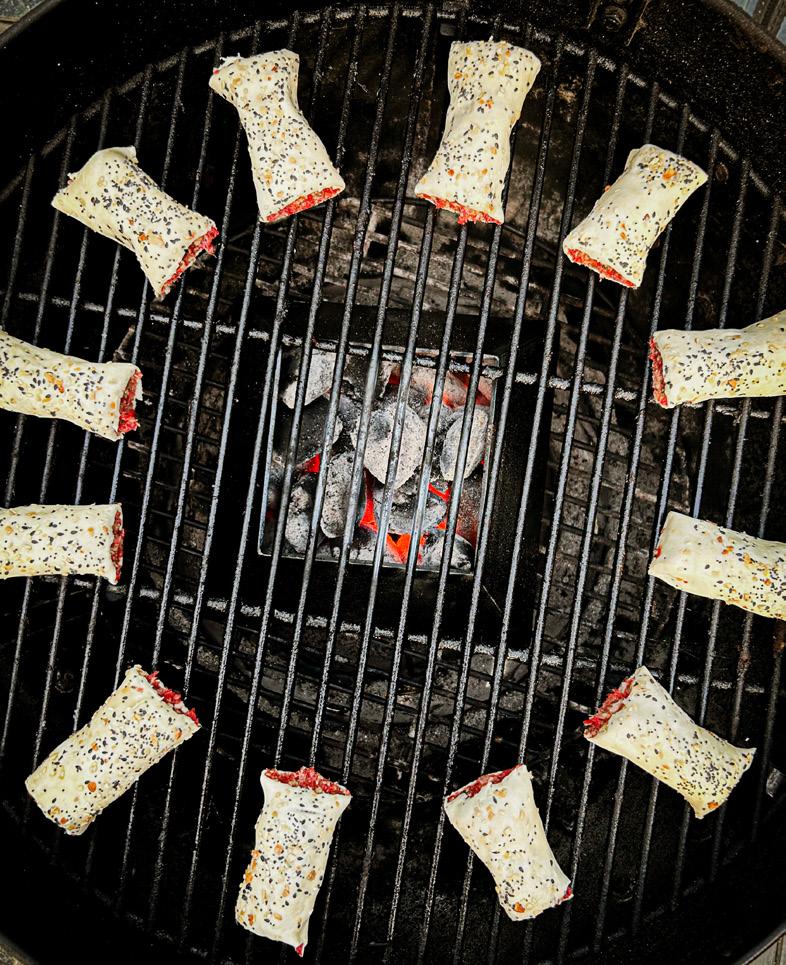

In a large bowl, add all the filling ingredients, then using your hands, mix well to combine.
Halve the pastry sheets lengthways to create four rectangular sheets, then evenly divide the venison mixture over each length of pastry. Using both hands, firmly roll the pastry over the mixture, sealing it with the egg wash.
Brush the tops with the remaining egg wash, then season with the everything bagel seasoning.
Tidy up the ends using a knife and cut each roll into thirds, giving you 12 rolls total.
Place the rolls onto a tray and into the fridge for 30 minutes to help firm them up.
Place the rolls into the preheated BBQ or oven for 25-30 minutes until golden and cooked through. Allow the rolls to cool slightly before serving.
Serve these wicked sausage rolls with a good tomato relish or the classic tomato sauce.
Your shopping List:
Roll filling:
• 500g venison mince
• 100g cooked bacon, roughly chopped
• 1 Tbsp fresh rosemary, chopped
• 1 Tbsp fresh thyme, chopped
• 1 Tbsp Texanz Lamb & Game Rub
• 150g grated cheddar
• 1/3 cup fresh breadcrumbs
Everything else:
• 2 sheets of puff pastry
• 1 egg, lightly beaten
• Everything bagel seasoning
Cooked on the BBQ or in the oven, these venison sausage rolls will win over any guest at your next party. Crispy pastry on the outside and gamey, cheesy filling on the inside. You won’t be visiting the bakery anytime soon after making these!
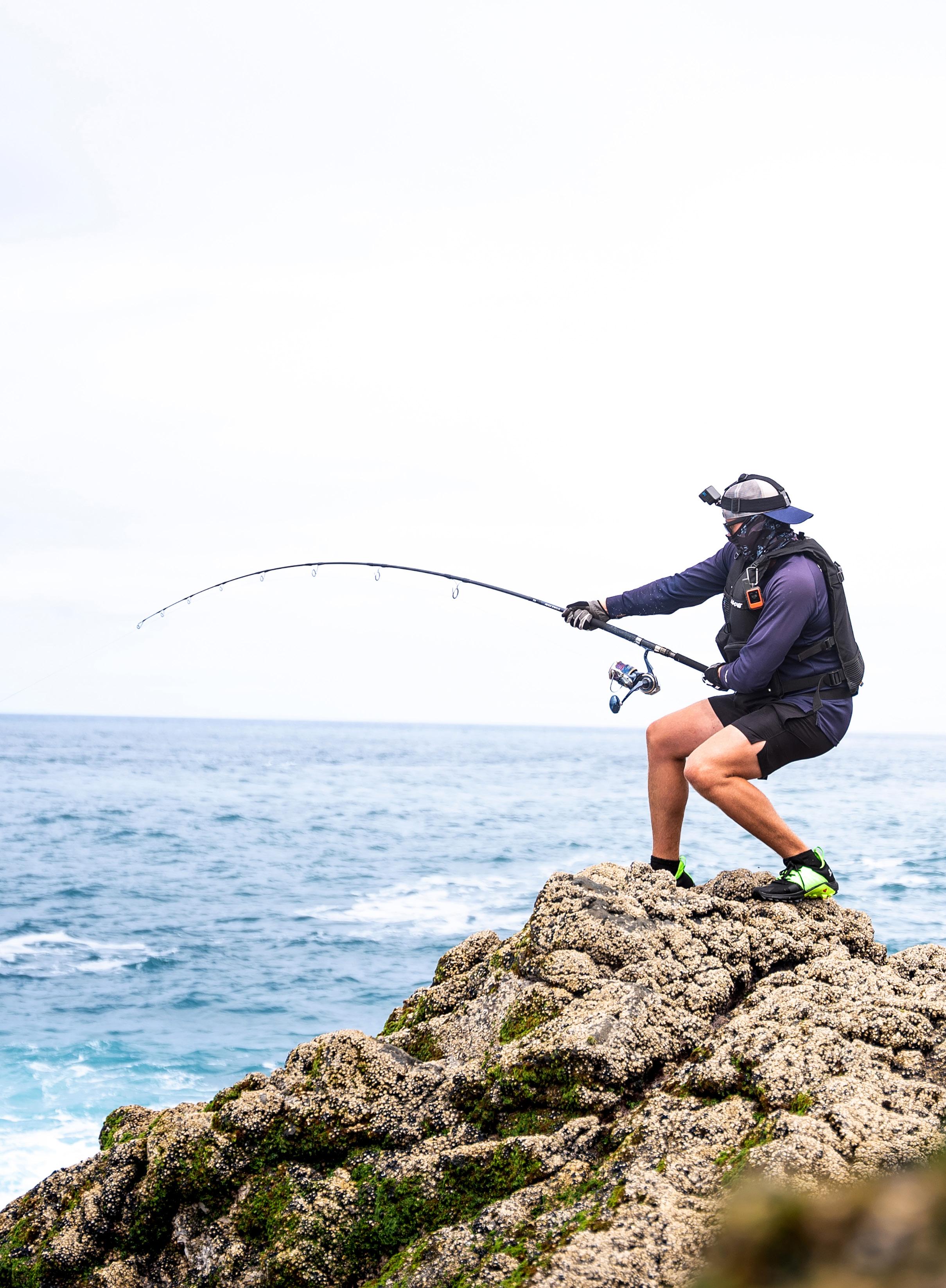 By Joe Edlington @j.e.wilds
By Joe Edlington @j.e.wilds
IIt was an early morning start as we made our way around the sheltered headlands. We had the boat loaded with topwater gear – ready for battle. The plan was to find a good ledge to jump on and target some giant kingfish on stickbaits.
Joining me were a couple of good mates – Mike from On Top Lures and Marcus, who had come up from Wanaka for a few days fishing with me. Mike is the genius mastermind behind OTL lures, a world-renowned topwater lure range that I have had some amazing success with. Marcus (Macca) is an experienced fisherman and hunter and has some awesome stories of his own. He usually joins me for a trip each summer and has a goal to get a nice kingfish on a topwater lure off the rocks.
As we passed a sheltered bay out to our right, it looked amazing in the morning’s conditions; there was no wind, and the sun was lighting up the tropical-looking aqua-coloured water. We checked a few headlands on our way down the coast. We were looking
for obvious pressure edges where the current was starting to flow up against the rock ledges. I had a particular spot in mind and, as we neared the headland, we noticed baitfish jumping in the sheltered coves near the main rocky point. This was a good sign, and just like that, our decision was made. This was where we were going to focus our fishing efforts for the day.
Mike nudged his boat up to the rocks. I jumped off the bow and took an armful of rods and gear with me. I took a few steps and placed it all down in a safe spot before heading back and grabbing another load of gear from Macca, who was now standing at the front of the boat. We ferried the remaining gear off the boat and backanchored it with a bungy setup safely off the rocky point, in a sheltered area just around the corner from the main fishing ledge.
I had brought two PE10 setups with me – both reels were Saltiga 18000H’s – and Saltiga rods. Macca was going to use one of these setups for the day,
so he started getting his reel out of its waterproof bag and putting it together. Mike brought along a PE8 and PE10 set up with him, so between us all, we had some grunty gear to stand up to the action we were hoping to find ourselves amongst shortly.
After putting my rod and reel together, I started looking through my lure selection. Between Mike and I, we had brought a heap of different colour options – all OTL lures. The baitfish we had seen jumping nearby were mullet; they appeared to be comfortable and free jumping, indicating they were schooling up and not being harassed. With happy mullet in the area, I chose to use an OTL 100g Chop in the mullet colour. This design is one of my favourite lures out there, and the fact there were mullet holding nearby, was the ideal lure to be using.
We started casting into the calm water. There was a deep drop off at our feet, and the water colour was bright blue/green. We all got into a rhythm, and we set into a cast-retrieve-cast-
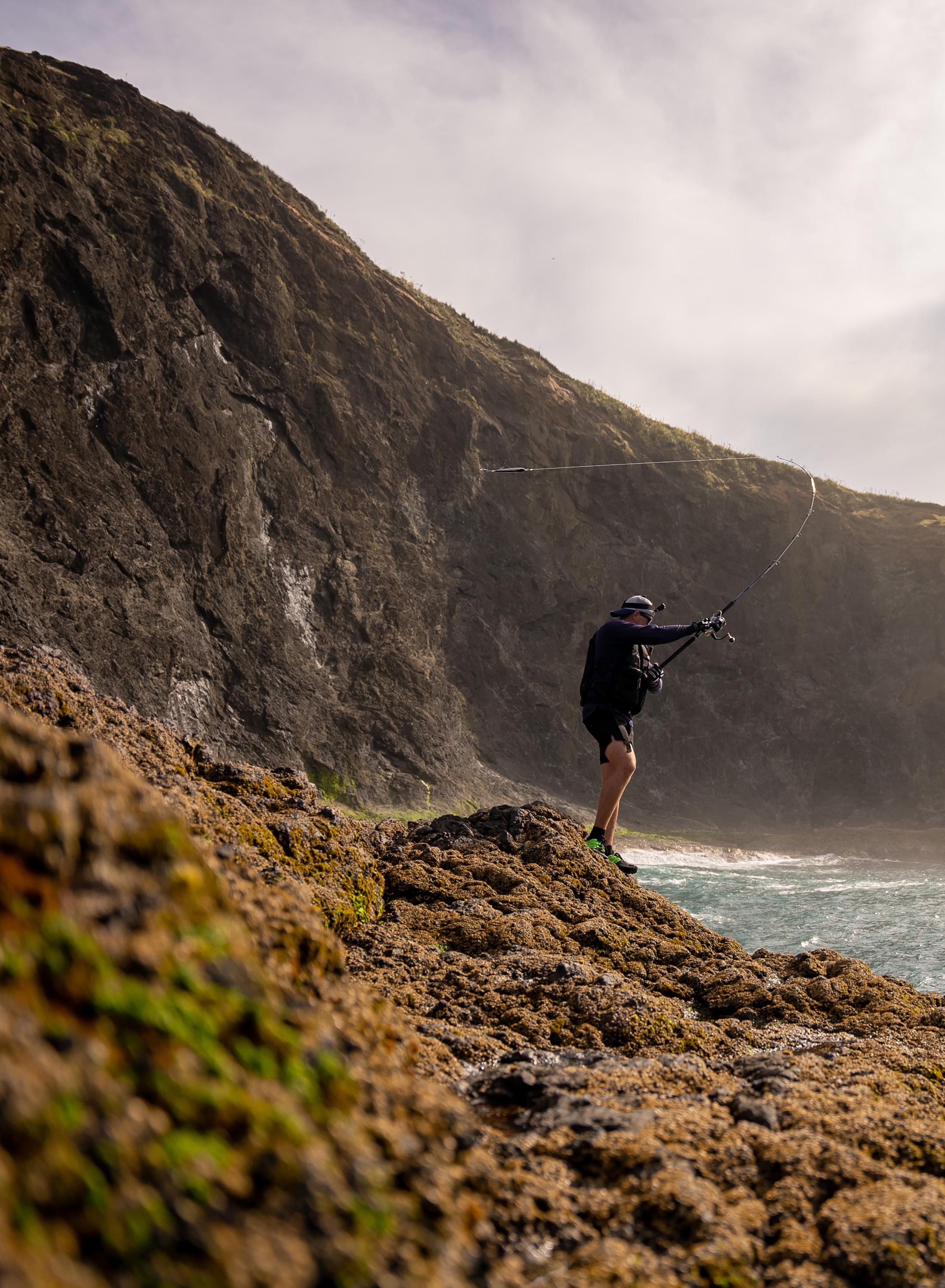

retrieve system while we talked, ripped into each other, and caught up on our recent adventures. I was standing near Macca talking about lure swimming techniques when deep below us a glint of silver shined through the water column. It took us a couple of seconds to register what it was, but as it got closer, there was no mistaking the outline of a big kingfish. It rose out of the depths below us and followed the kelp edge, both Macca and I were frantically casting our lures ahead of it hoping to bring it to the surface, but it didn’t show any interest at all. The big fish disappeared around the corner and out of sight. All three of us were fired up from the encounter but gutted we couldn’t trigger a bite; this fish was obviously not hungry.
A while later, a huge eruption of white water exploded at the opposite point from us! Mullet were launching out of the water and huge kingfish were getting airborne chasing them. Better yet, this massive pack attack was headed in our direction! The mullet school raced as fast as they could, with the kings right on their tails. They blew up on the surface a bunch of
times before disappearing and going quiet, we knew they were still being chased in our direction, so the three of us scanned the water below, looking for any sign of the stampeding fish. The first group of mullet came flying through literally just a few metres in front of us, moving fast and for obvious reason as out of nowhere a pack of kingfish followed them right to our feet! We cast ahead of them, trying to get our lures into their zone. At this stage, there
were mullet in all directions, frantically darting everywhere, with kingfish chasing after them only metres away.
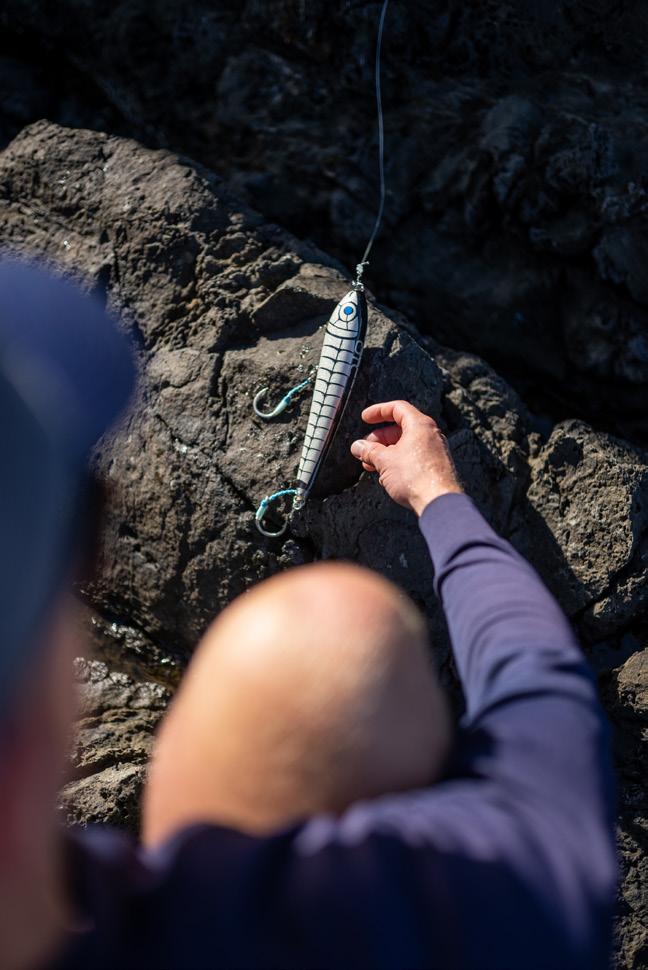
I peeled off to the right from Mike and Macca, and a group of mullet came straight in my direction, they hit the kelp edge just as the kings came through. I bombed my lure on the surface trying to create as much noise and splash as possible… and it worked! A big fish came straight up from below and got airborne as it hit the lure! Unfortunately,

the hooks didn’t grab, and the lure and fish hit the water and separated. I quickly recast in the direction the fish had gone and burned it in as fast as I could possibly wind. Another king was quickly on the lure, chasing it, then engulfed it right at my feet and thrashed the surface as I took the full load on the rod! At this moment, a second fish grabbed the lure out of the first king’s mouth, and, for a brief moment, I had two fish hooked up on one lure! They thrashed about before one of the fish came loose. The fight kicked into gear as the fish got traction in the water, with a couple of big power runs as I hung on tight to the rod. There were more kings following it, and Mike and Macca casted over my fish hoping to get a double or triple hookup.
I was running a near-locked drag, and at one point the kingfish did a huge run that pulled me off balance,
and I hit the rocks – almost going into the water. I regained my footing and copped a heap of laughs from the boys before continuing the fight and tiring the fish out. Mike landed it for me – a nice kingfish, and we were stoked to be on the board! A quick photo and we released it back to swim for another day.
Shortly after we had another eruption in front of us. There was another school of mullet getting pounded by an even larger pack of hungry kingfish! There were mullet flying clear out of the water and fish getting demolished in all directions. All three of us were casting into the feeding frenzy, and Mike and I had a big hit on the lures each but failed to get the hooks in. Macca did a long cast out the back, and just as he brought his lure through the centre of the melee, a couple of fish peeled off and started
chasing his stickbait. They were hot on it as another fish exploded onto the lure from below! A solid hookup for Macca, and the line started rapidly emptying from his spool. This kingfish was going hard and really putting the pressure on Macca; he did well to keep it away from the reef edges and eventually got it to the surface where I could get down to the water level and land it.
Another awesome fish for the day and a goal ticked off for Marcus! This was a day to remember – being in amongst two huge pack attacks on mullet was something we could only dream about – such a good day with good mates! If you want to watch the video of this day, you can find it on my YouTube channel, ‘JE Wilds - Fishing’.
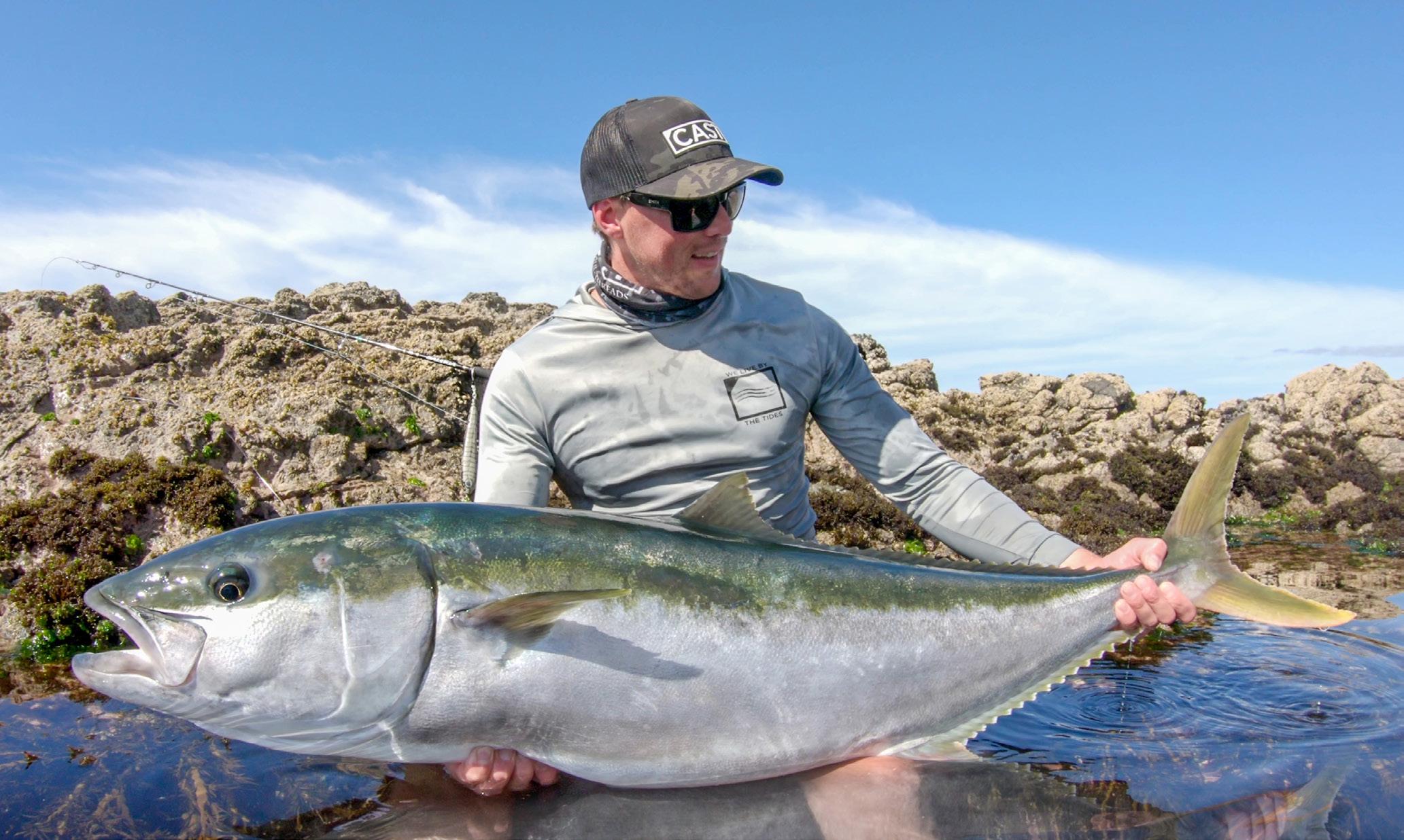
“There were mullet flying clear out of the water and fish getting demolished in all directions.”By Nick Jones
Here at Rheem offsite, we love a good adventure; and a rooftop tent is a perfect partner for exploring the outdoors with freedom and flexibility. There’s no need to plan in advance, book expensive accommodation, or worry about getting to a destination on time to set a tent up. Instead, you can simply get out there and do it!
We were fortunate enough to recently test the Wild Land Desert Cruiser DC2 Aluminium Hard Shell Roof Top Tent for a weekend of fishing and exploring in the Coromandel. The DC2 is made by Wild Land – a renowned,
growing manufacturer that’s been in the game for over 20 years – and is imported and distributed in NZ by Composite Developments.
This aluminium hard shell roof top tent uses a unique hybrid side opening design and features the lowest profile on the market. Tough weatherproof and anti-scratch construction helps it handle NZ’s harsh weather better than other brands’ fiberglass or ABS plastic options, and top-mounted gear racks have room for your surfboard, kayak, or other toys. There’s also a range of accessories like an annex room, side
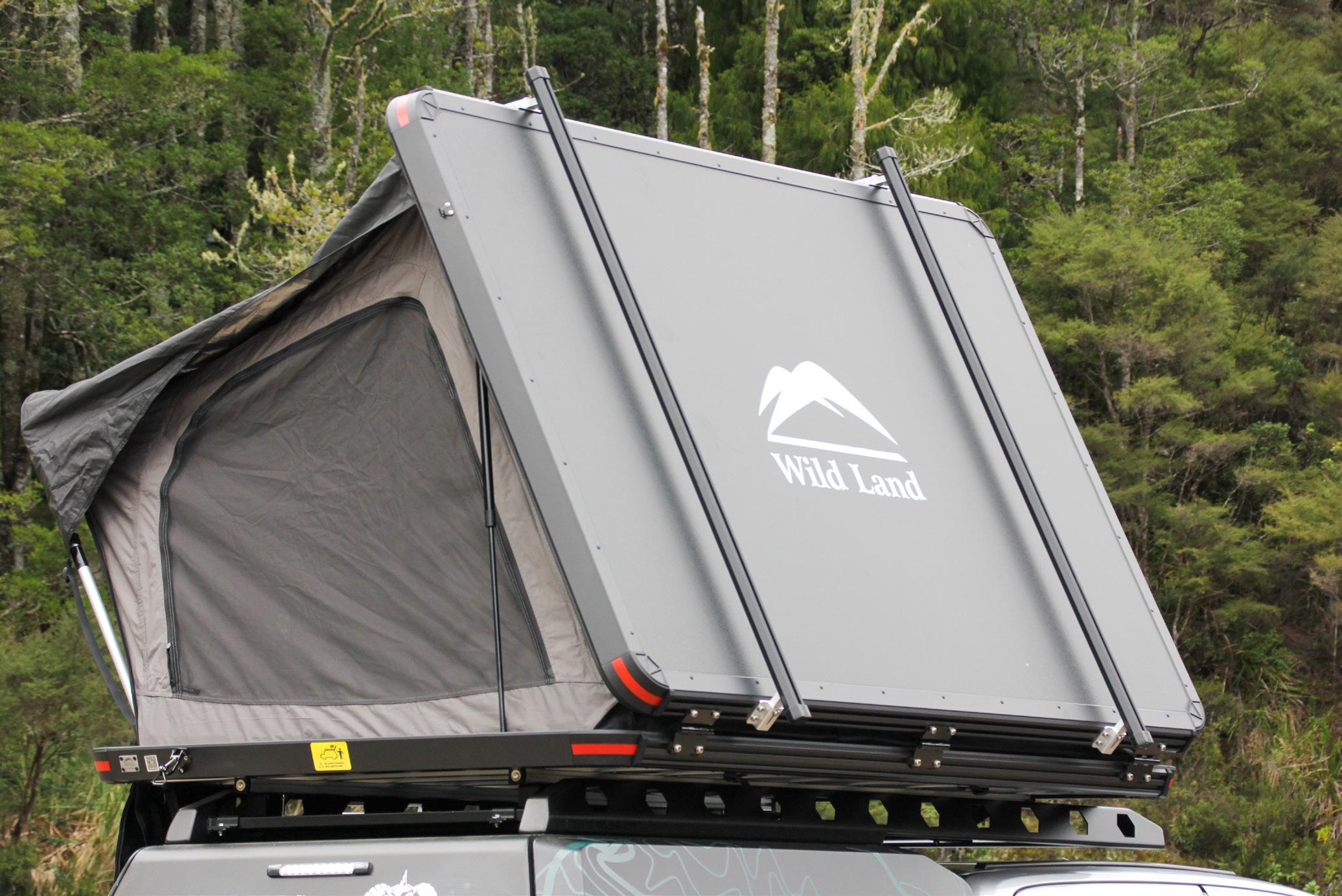
awning, and winter thermal insulator that allows you to customise the DC2 to fit your needs.
The DC2 has been engineered with a ‘keep it simple’ philosophy. Initial setup is easy; all you require are roof racks on your vehicle on which to secure the tent with the assembly nuts, bolts, and plates provided. Once installed, popping the tent up is a breeze; it only takes a minute with the patented gas struts and there’s no heavy lifting or awkward reaching required. Pack down is equally straightforward and takes less than two minutes.
Our test weekend threw up a range of weather conditions. The DC2 lived up to its waterproof billing and the dustproof rubber reals kept the dust out of the tent when travelling on the gravel. The low weight – just 57kg for the 120cm wide version and 64kg for the 140cm – and low height meant it didn’t slow our progress and wind noise wasn’t a concern at open road speeds.
Access into the DC2 is simple with the ladder, and it comfortably accommodated two of us for a night in the bush. I was particularly impressed by the room on offer; I’m 6’3” and like to snooze at full stretch! The frame base and waterproof Oxford lining also meant there was none of the condensation that can occur with solid floor roof tents.
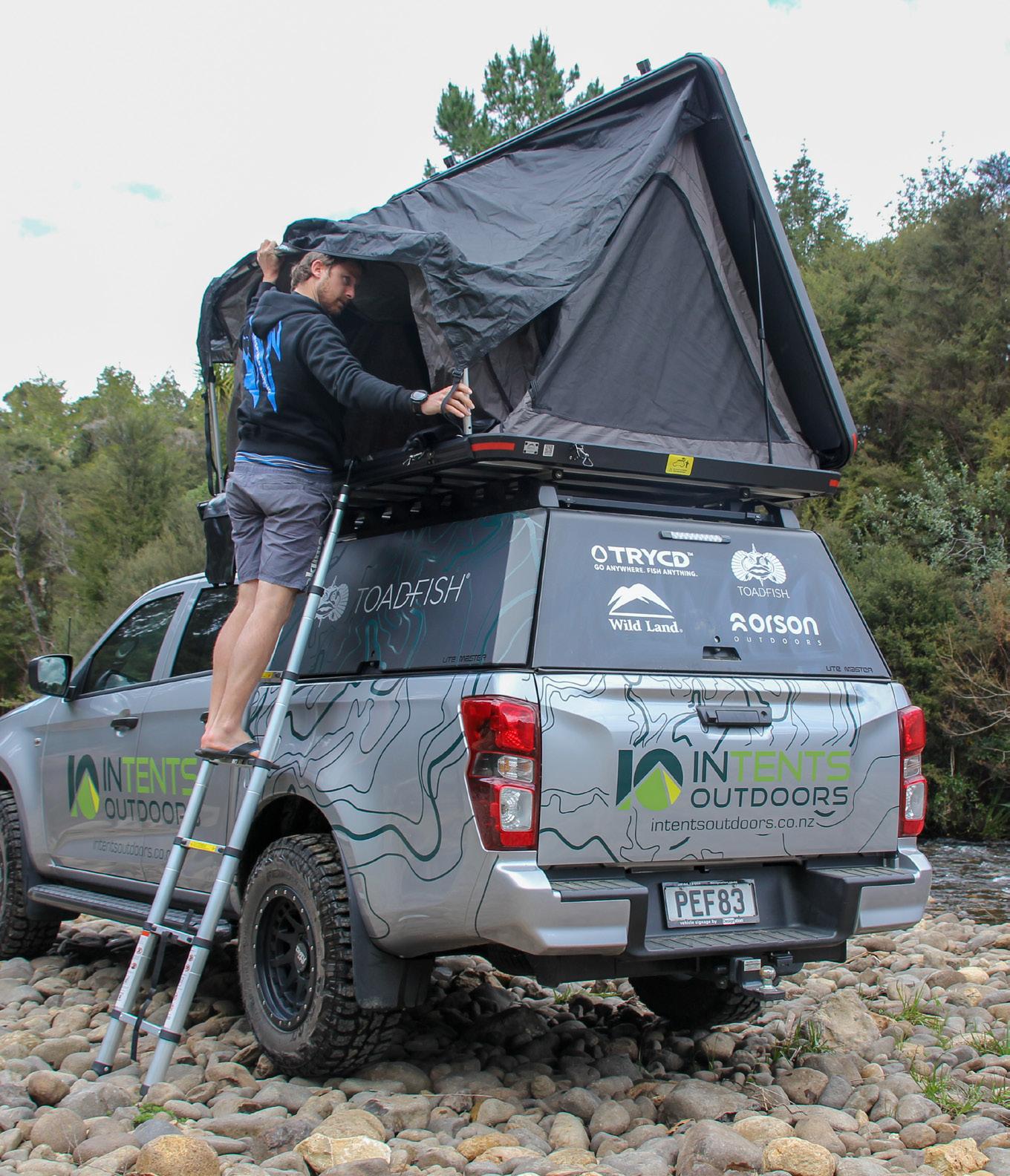
The DC2 is available in 120cm and 140cm wide models and is significantly cheaper than comparable aluminium hard shells on the market.
You can find out more here:
• Low profile and low weight for easy handling on your vehicle.
• 60-second set up and 90-second pack down.
• Two racks included to carry gear on top.
• Tough shell and construction with aluminium honeycomb top lid and sturdy aluminium frame base.
• Waterproof and dustproof seals.
• Two sizes – 120cm or 140cm wide x 205cm long x 5cm mattress.
• Waterproof tent PU3000mm and UPF50+ lining.
• Reduced condensation, weight, and bulk with clever floor design.
• Big door and windows for easy access and great views with fabric/mesh options.
• Side extrusions to attach racks, lights, etc.
• Strip light, storage pockets, shoe bags, 2.3m telescopic ladder, and fittings included.
• Accessories available, including awning, annex, and winter insulator options.
• A standard year-long warranty covering any manufacturing issues under normal usage.
• Full range of spare parts available.
• Imported and distributed in NZ exclusively by Composite Developments.





